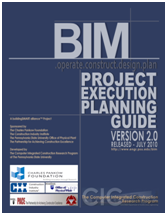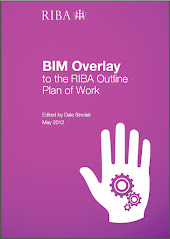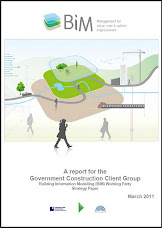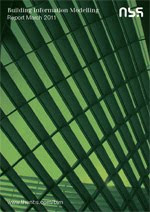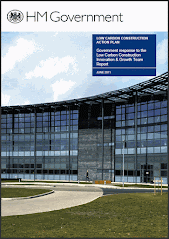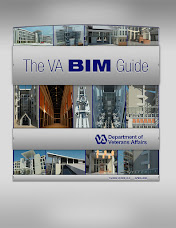If these reviews seem fragmented it is because I’m documenting my thought processes as I look at what has been offered to us to comment upon. It’s easy to be extract the urine and think some of the things I have printed when working through such material, and I’m sure that the Gumby’s, I mean development team have worked hard getting to where they are, but some times you can be too close and miss the obvious, I did (see FF & PF below).
Also they have to effectively communicate what they have produced and sell it to the end users. A typical example is the lack of a simple list or key to the terms used in the naming convention i.e. the list I have been establishing by inspection over the last couple of days, should have been included in the supporting documents.
Thank you to the kind soul that commented on Part 1 of my Review that FF and PF means, Full Fill and Partial Fill missed that one completely. Now going back to see why I thought PF meant Polyisocyanurate Foam Board, I can see that it only Partially Filled the cavity, thus that’s why the Brd was missing and it was an unhappy coincidence that the name also started PF.
Thus I feel that I have proved
1) The need for a Key to the terms used.
2) The rejection of Camel Case as a naming convention
On the Linked-In group thread Stephen Hemil has stated “We’ve also had comments already mainly about naming convention, so what is presented here will probably not be the final naming convention that is released. We’d also really appreciate comments on the depth of content within the objects and the functionality of geometric parameters.”
And on the Linked-in group he has also been stated that “* Regarding the naming convention, we will probably tweak again before launch. We'll plan to have something that is in-line with the current thinking in the BS 8541-1 draft as discussed in a previous thread.”
Now that being said it should not be a case of “probably tweak again” Surely (Don’t call me Shirley) the naming will have to be looked at again!
Also it have been suggested that “Well plan to have something that is in-line with current thinking in the BS 8541-draft”. This draft is has not even yet been published for comment and is not due until the 1st December. Please learn from your mistakes and consult the end users before you alter this.
I have commented that “telling us that the naming convention is going to be based upon BS8541 Part 1 is about as useful as a pushbike is to a goldfish. How do we check that this BS is not being created by Numpties, and that it is appropriate for use before December 1st?”
OK I couldn't find a picture of a Goldfish on a Bike ............ any ideas why ;0)
And thus we are reviewing something that is going to be miles away from the final product, but anyway so that errors, miss understandings and feedback can be provided to the NBS we must continue.
So my little BIMmers here we go again ……. Back to the Future III, …..I mean Draft Revit NBL Content – Review Part 3
Recap and building the Key to the naming convention that should have been provided within the supporting document nbl_WallUserGuide.pdf (NBS / BIM Academy are you getting the hint yet?)
Listing in alphabetical order for easy reference and most people know the alphabet
Blk = Block
Cavity = Cavity
CBPBrd = CementBondedParticleBoard
ClayBrk = Clay Brick
DryLng = Dry Lining
Ext = External
FF = Full Fill
GypPlstr = Gypsum Plasterboard (I guessed Gyproc Plaster in Part 1 and 2)
Insul = Insulation
MF = Metal Frame
PF = Partial Fill
SteelFrm = Steel Frame
Stone = Stone
TmbrFrm = Timber Frame
OK I can’t resist but I’m guessing again that the 25mm Metal Frame is actually a top hat section resilient strip at joints so is the Steel Frame that is really Stud not made of Metal? Just asking don’t shot the Reviewer you asked for feedback ;0)
Some really basic and traditional wall configurations are missing from the list provided and there are some here that not having used steel studwork as an inner leaf on projects I can’t say if they are correctly specified (but I’ve done a little guessing above and asked questions). However what is missing is the thickness of the material with the name of the family.
For example from the spreadsheet that I put together and provided to the NBS well before the release of the current draft content. And I will start with …… the Key to Naming Convention
Here is the list that we (Ralph and I) started to build before the announcement that the NBS were going to produce the NBL and create UK specific System Wall Families
It should be noted that we were at the point where we wanted Architects to let us know what wall configurations they had actually specified over the last 15 years during the relentless changes in Part L of the building regulations in order to meet the ever increasing thermal requirements to reduce Carbon and save the planet.
So NBS I would suggest, and looking at the Linked-In thread so have others, that the dimensions need to appear in the naming of the family. So if you are actually going to act on the feedback you will have to review the naming convention
The more I’m looking at what has been offered up for review the more questions it’s forming in my mind.
Is one really expected fill in all those COBie parameters that the NBS have listed as being added to each wall family?
Most of the parameters don’t appear to build any useful information and the designers would not have the information anyway. Prime example is “ProductionYear” is that for the sand and cement in the render, the Bricks, insulation, Blocks the Metal Frame and the Plasterboard?.
Having supplied such useful (that’s being sarcastic, just incase you missed it) information to the Government exactly what are they going to do with it?
How has that piece of information improved the production information and the building of a project?
I’m looking for light at the end of the tunnel here, anyone out there with a torch?
That has to be it for Part 3 ……. Stay tuned for Part 4
(Same Time, Same Channel, and the Batman theme music is playing in my head……. ;0)













































